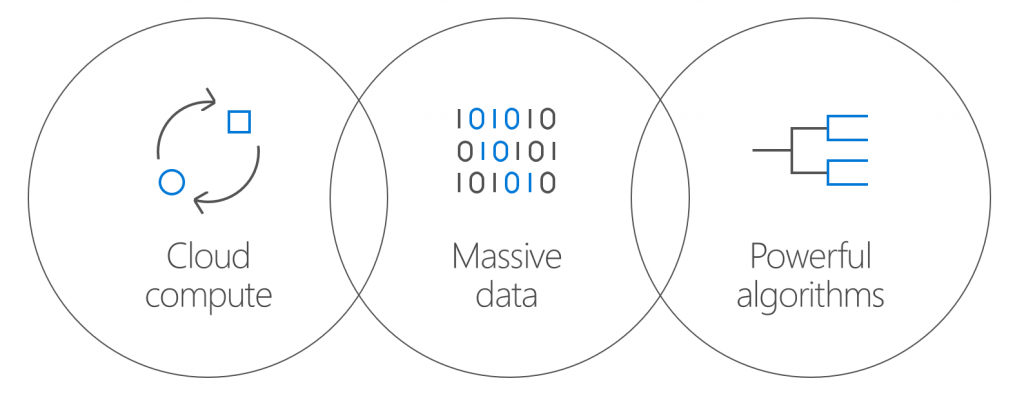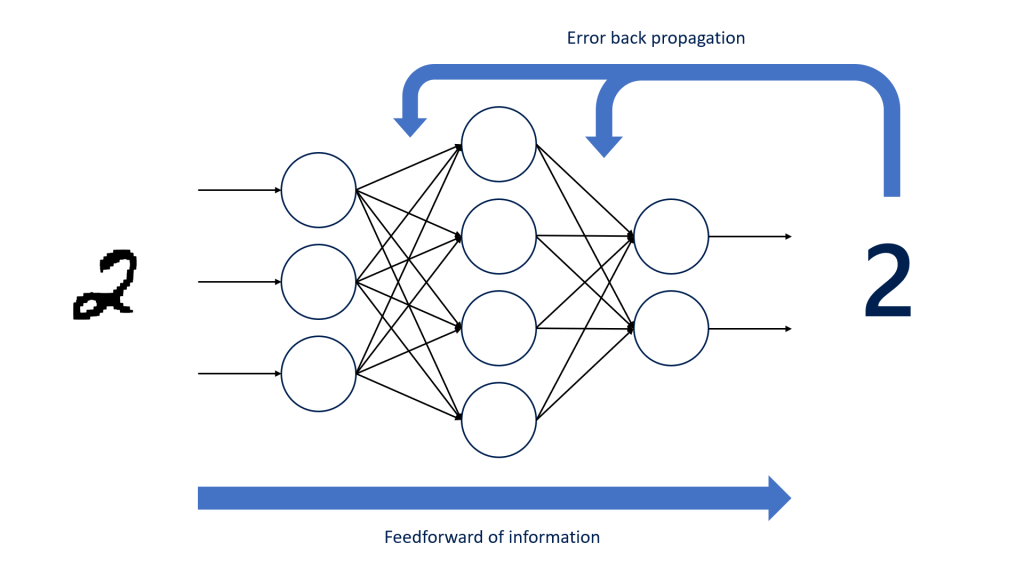AI and the New Generation of Software Building Blocks
Today at Build 2018 there was a lot of great energy around the work Microsoft is doing in the area of Artificial Intelligence (AI). This energy comes from our continued investment to deliver on the capabilities customer and partners have been asking for, along with unique new innovations.
While there is strong interest in the topic of AI, many business leaders and teams are trying to determine how to think about AI relative to their industry and/or company. This has become incredibly apparent in the hundreds of AI conversations I’ve had with teams from around the globe in the last year. In the spirit of bringing these conversations to life I’m going to publish 3 blog posts covering the core conversations we typically have on this topic including:
- The new generation of software building blocks and why the AI conversation is so active now (this post).
- Microsoft efforts around AI… from our AI platform, to the infusion of AI into our own products, to a new generation of AI solutions.
- AI in businesses and lessons from customers wanting to deploy AI solutions.
The software industry has historically looked to Moore’s law for guidance on how core technologies will advance to determine what is possible in the future. Our industry over the last 20+ years has leveraged three core building blocks: Compute, Storage and Networking (CSN); to power multiple waves of transformation. As these building blocks continuously became both more powerful and more affordable, the industry has evolved through multiple eras of compute paradigms including; standalone PC’s, client-server computing, the Internet wave, and the current cloud and mobile era, and the evolving intelligent edge and intelligent cloud paradigm. While these core building blocks will continue to evolve and power new eras of software/computing there is also a new generation of building blocks emerging that will further accelerate what the software/IT industry is creating.
From AI, to mixed/virtual reality, to blockchain, to IoT, to quantum computing, and more… the students of today will join the industry with the ability to harness this new generation of building blocks. In the same way we have observed how Compute-Storage-Networking have been interwoven into a seamless set of capabilities, this new generation of building blocks will also be interwoven over the next 20 years to create transformational opportunities we are only beginning to contemplate. It is an incredible moment in time where we can see the emergence of both the people and the tools that will shape the next 20+ years of software and computing.
Even though the topic of AI is not new, three core capabilities have emerged that are allowing AI to be a front and center conversation in this new family of building blocks.
The field of AI goes back to the 1950s when a group of leading researchers met to discuss the possibility of cognitive machines. Since that time there have been booms and busts of euphoria for AI. “AI Winter” has been the name given to the busts. What makes this time unique is the combination of access to CSN at scale through the cloud, the growth and availability of data at scale, and breakthroughs in AI research that are powering access to easier to use tools and techniques.
- Cloud - With the growth and availability of the cloud. Developers and researchers across the world have access to the CSN that they need at scale to create or work with AI tools, models, and data.
- Data - In parallel, the growth of data for building and training models is growing exponentially based on both human generated (e.g. social networks, photos, text) and machine generated (e.g. computers, phones, IoT sensors).
- Algorithms - The third key ingredient to AI acceleration is advances in the algorithms and AI tools available for developers and data scientists.
Big compute in the cloud provides many resources for processing enormous amounts of data which are critical for training AI algorithms. In Azure for example, there are the tools to store, transform and process big data sets along with the processing power (CPU, GPU, FPGA) to calculate equations quickly. Beyond the data sets that you provide Microsoft also has proprietary data sets to help companies. Bing, LinkedIn, and the Microsoft Graph provide unique insights that organizations can use in their applications. With data and the cloud, the next step are the algorithms that make computer vision, natural language processing, and more possible.
While Microsoft Research has been working on AI and deep learning techniques for more than two decades, the last 5 years have seen an incredible rate of advancements in the state of the art across a variety of use cases.
- In 2016 Microsoft surpassed human parity in object recognition by deploying a 152-layer neural network.
- A year later we surpassed human parity for speech recognition over a phone line with the lowest percentage of errors.
- January of 2018 we surpassed human parity for machine reading comprehension about the same time as Alibaba.
- AI innovation is accelerating and a few months later in March we matched human parity in translating news from Chinese to English.
There is an incredible amount of energy in the research community right now around AI, so I anticipate many more advances in the coming years.
So now we have the core formula of CSN at scale for all developers, the growth of data for building and training models, and research advances in core algorithms that bring AI to the point where we can begin looking at what opportunities it can provide both today and into the future. With that said, we are still in the early days of AI and all the new building blocks.
Join me again next week when I will discuss Microsoft’s efforts around AI and the role that this week’s Build announcements play in evolving them.
Cheers,

